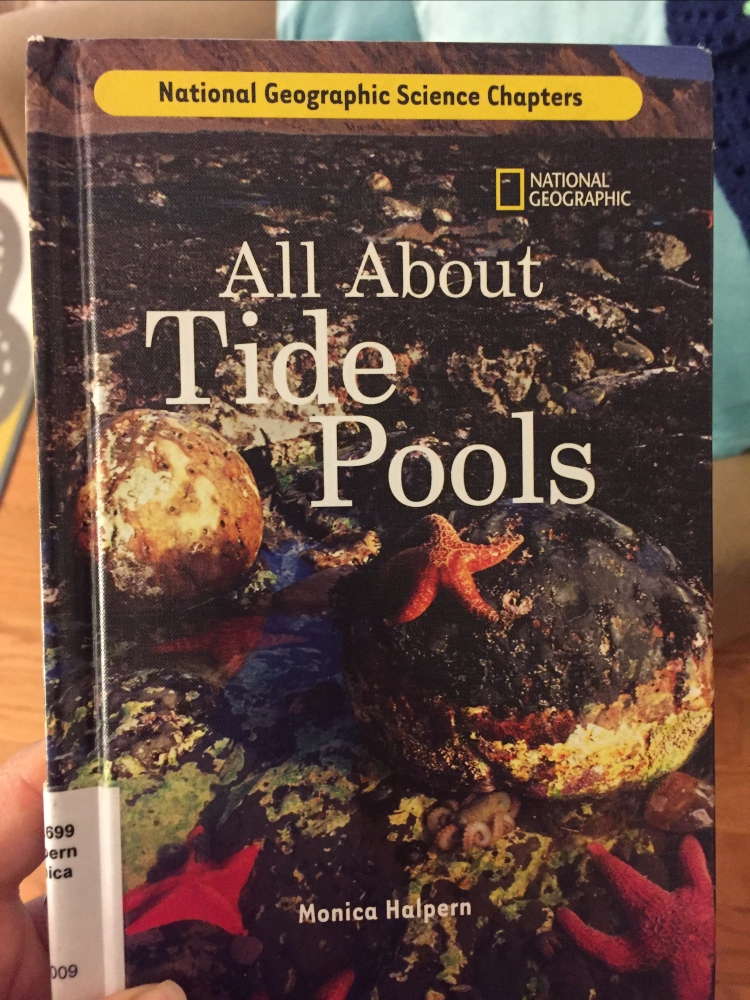We spent our last couple of days in Olympic on the Pacific Coast, staying at Kalaloch Lodge and visiting Ruby Beach. Prior to our trip, we had prepped with several books about wildlife in the Pacific Northwest and Native American legends from the region, but the book that really paid dividends was this little guy on tide pools:

We visited tide pools in two very different areas. First we went to Salt Creek County Park on the Straight of Juan de Fuca. Here the rocky shore line traps pools of water as the tide goes out, and you can walk out on the dry areas and peer into the puddles, which are teeming with life! Tiny hermit crabs, anemones, mussels, and barnacles were especially prolific here. We also noticed lots of small fish and a few chitons. Be extremely cautious in areas like this as anything wet is super slick with algae! We kept little guy on dad’s back in the hiking pack and made sure our preschooler was always holding a grown-up’s hand.
When we went to see the tide pools at Ruby Beach (on the Pacific Coast), we expected they would be similar. Boy, were we wrong! Ruby Beach, pictured below, is a flat, perfectly sandy plain. The “rocks” here are actually sea stacks — pieces of coastline separated from the mainland by centuries of erosion. Rather than tide pools, you see what my husband dubbed “tide walls” where marine creatures cling to these sea stacks, varying in size from large boulders to small islands, and wait for the water to come back in.
We noticed many of the same animals and plants that we had seen on the straight; however, these were overall much larger and instead of fish, we saw SEA STARS! Because the anemone were larger, it was easier to distinguish different types, and we also were able to see a red crab about three inches wide! We also learned an important rule of tide pool etiquette: it is not okay to pick up any animal that is hanging on as you can injure them. However, if you happen to see a critter just strolling across the sand, you can gently handle them for short periods. I was quite surprised by this as I figured it would be verboden to touch them at all. What do you think about handling wildlife in general? Good learning experience for kids? Safe? Weigh in in the comments.
As I’m sure you know from my previous posts, my children are really not satisfied near water unless they’re throwing rocks into it. Our three-year-old did very compassionately understand that we do not throw rocks in tide pools because there are tiny creatures living there, and as he said, we wouldn’t want someone to throw rocks into our house. Fortunately there were lots of fascinating rocks and no tiny creatures on the Kalaloch Lodge beach. Our budding geologists/baseball players got their fill there!













What a unique learning experience! Looks like so much fun! Thank you for sharing at Mama Blog Monday! 🙂